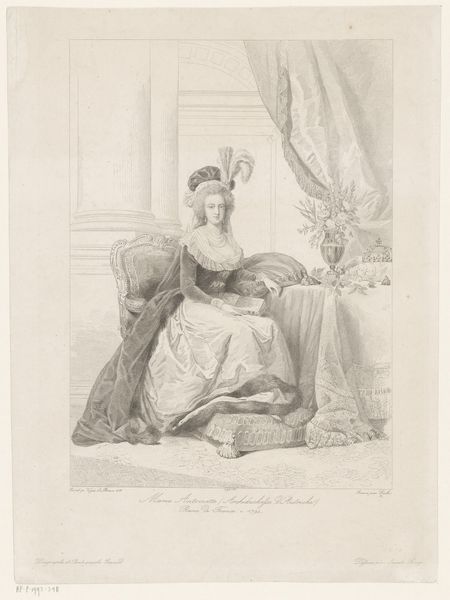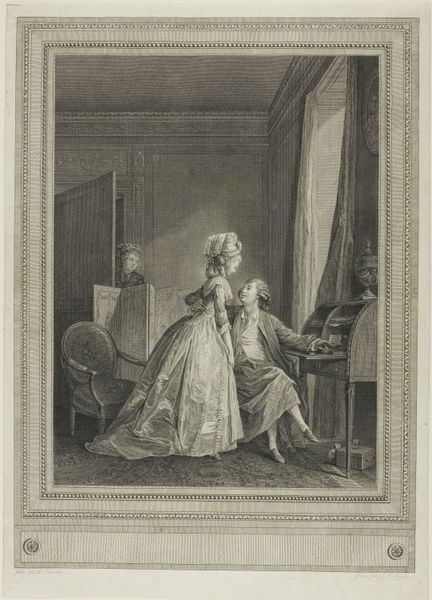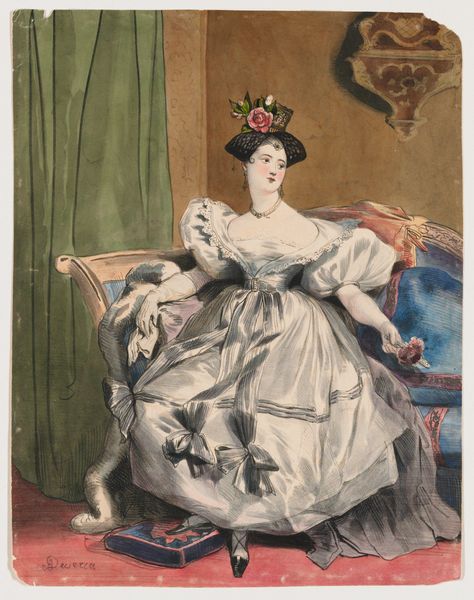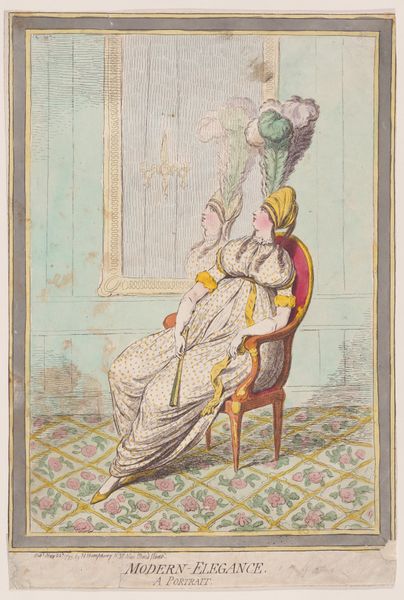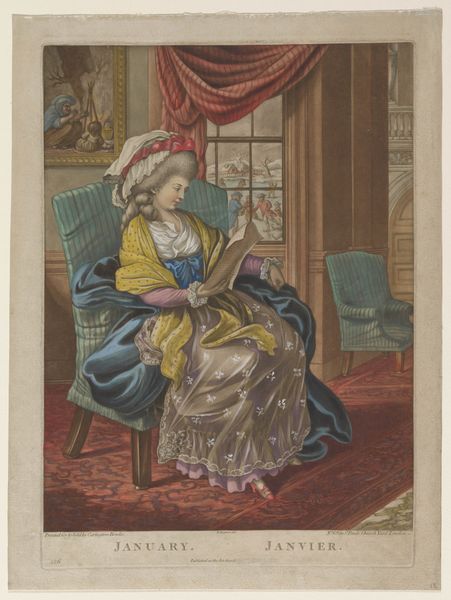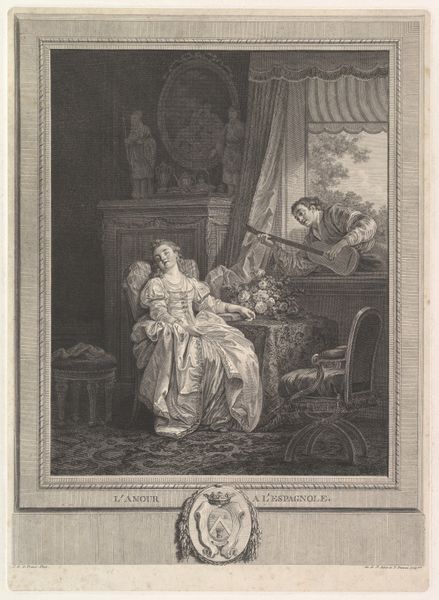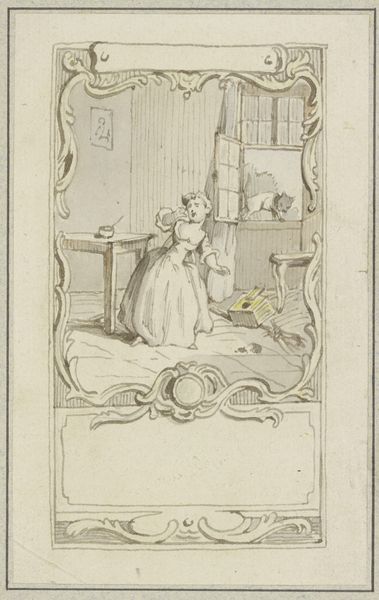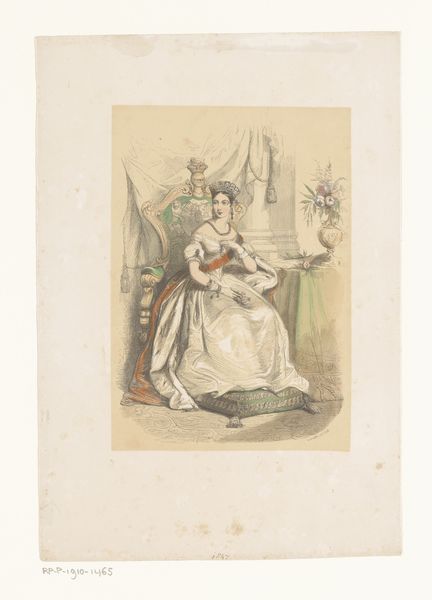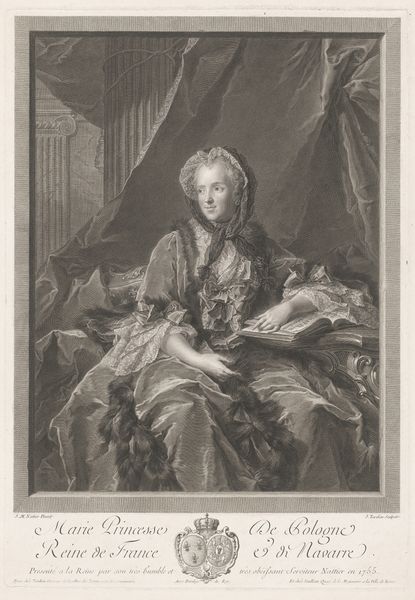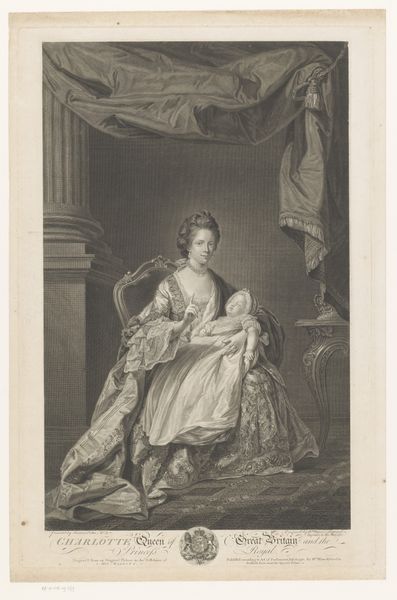
drawing, watercolor
#
portrait
#
drawing
#
watercolor
#
watercolour illustration
#
genre-painting
#
rococo
Dimensions: 13 7/16 x 10 9/16 in. (34.13 x 26.83 cm) (image)
Copyright: Public Domain
Curator: Good morning! Let's explore this lovely watercolor, "Spring," by Robert Dighton, created in the late 18th century. I’m immediately drawn to its depiction of domesticity. What's your initial reaction to this work? Editor: It's really beautiful. The colors are so soft and gentle. I like the subject; she seems very delicate. How would you interpret this work within its historical context? Curator: Well, let's think about the era. The late 18th century was a time of great social and political upheaval, especially regarding gender roles. Rococo art often celebrated leisure and beauty, but it can also be interpreted as reinforcing certain societal expectations of women, don’t you think? Consider her dress, her posture… Editor: You're right. It’s lovely, but her dress does look impractical, restricting. Curator: Precisely! And this creates an interesting tension. Dighton positions her with fresh flowers in an intimate domestic scene, emphasizing perhaps the “feminine” sphere of life at that time, and it reminds me to consider ideas about femininity and constraint. Do you feel any resonance to current debates around women and domesticity? Editor: Absolutely. I can see connections with the pressure women face today balancing work, family, and societal expectations. Is that what Dighton was maybe trying to communicate? Curator: Dighton’s intent remains unknown; as cultural critics we bring new lenses and sensitivities. This watercolour offers an opportunity to discuss intersectionality. The artist can communicate several social perspectives; ours offers insights and challenges what we assume about past works, encouraging broader dialogue. Editor: That's fascinating. I never thought of it that way. Curator: Exactly, “Spring” blossoms beyond the mere aesthetics of art—illuminating intersectional meanings with historical nuances, don't you agree?
Comments
No comments
Be the first to comment and join the conversation on the ultimate creative platform.

